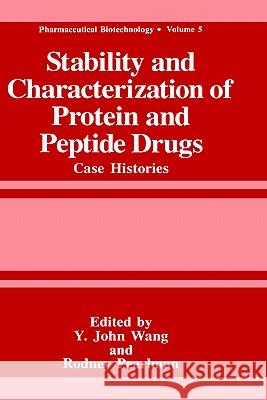Stability and Characterization of Protein and Peptide Drugs: Case Histories » książka
Stability and Characterization of Protein and Peptide Drugs: Case Histories
ISBN-13: 9780306443657 / Angielski / Twarda / 1993 / 353 str.
Stability and Characterization of Protein and Peptide Drugs: Case Histories
ISBN-13: 9780306443657 / Angielski / Twarda / 1993 / 353 str.
(netto: 734,36 VAT: 5%)
Najniższa cena z 30 dni: 765,72 zł
ok. 20 dni roboczych.
Darmowa dostawa!
This volume attemptsto provide the formulation scientist with casehistories involving the use of therapeutic proteins and peptides that have been mar keted or are under clinical testing. In previous volumes of this series, funda mental theories and principles ofprotein characterization and stability were presented in depth by researchers in their fieldsofexpertise. The way from theory to practice isnot alwaysobvious and straightforward. There isa need for practical examples of how the principles and theories are put into use, specificallyin the development of a pharmaceutical product. It is our hope that this volume will fulfillsuch a need. Itisnot asimple task to choose a panel ofproteinsand peptides from the over 200 agents in human clinical trials. We have tried to collect a wide representation of molecules of different sizes-from 10 amino acids (Leu prolide) to 1020 amino acids (Muromonab CD3). The examples include agents derived from various sources including monoclonal antibodies (Mur omonab CD3), recombinant DNA (human and bovine growth hormones), natural source (fibrolase), and chemical synthesis (Leuprolide). Clearly this list is not intended to be encyclopedic. It isthe first time a collection of this sort has been made accessibleto the formulation scientists involved in devel oping protein and peptide products. Although each chapter in this volume focuses primarily on the charac terization and stability of a specific molecule, each has unique aspects.











